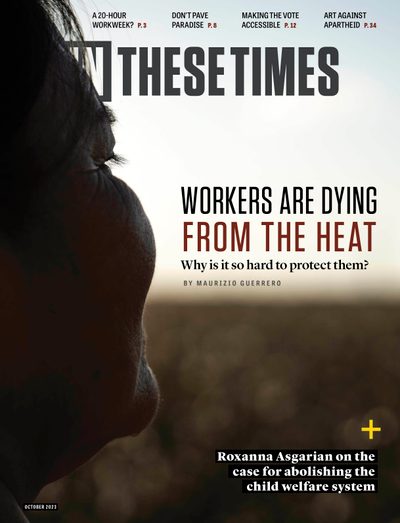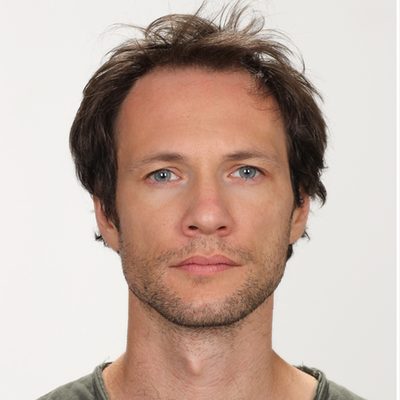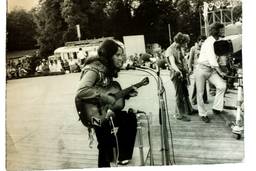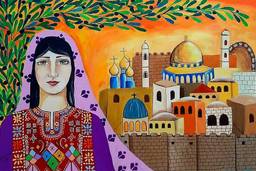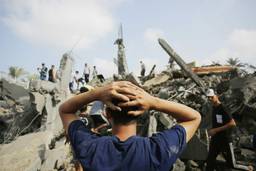Art Against Occupation
Malak Mattar’s London show examines the U.K.’ s role in Palestinian colonization.
Matt A. Hanson
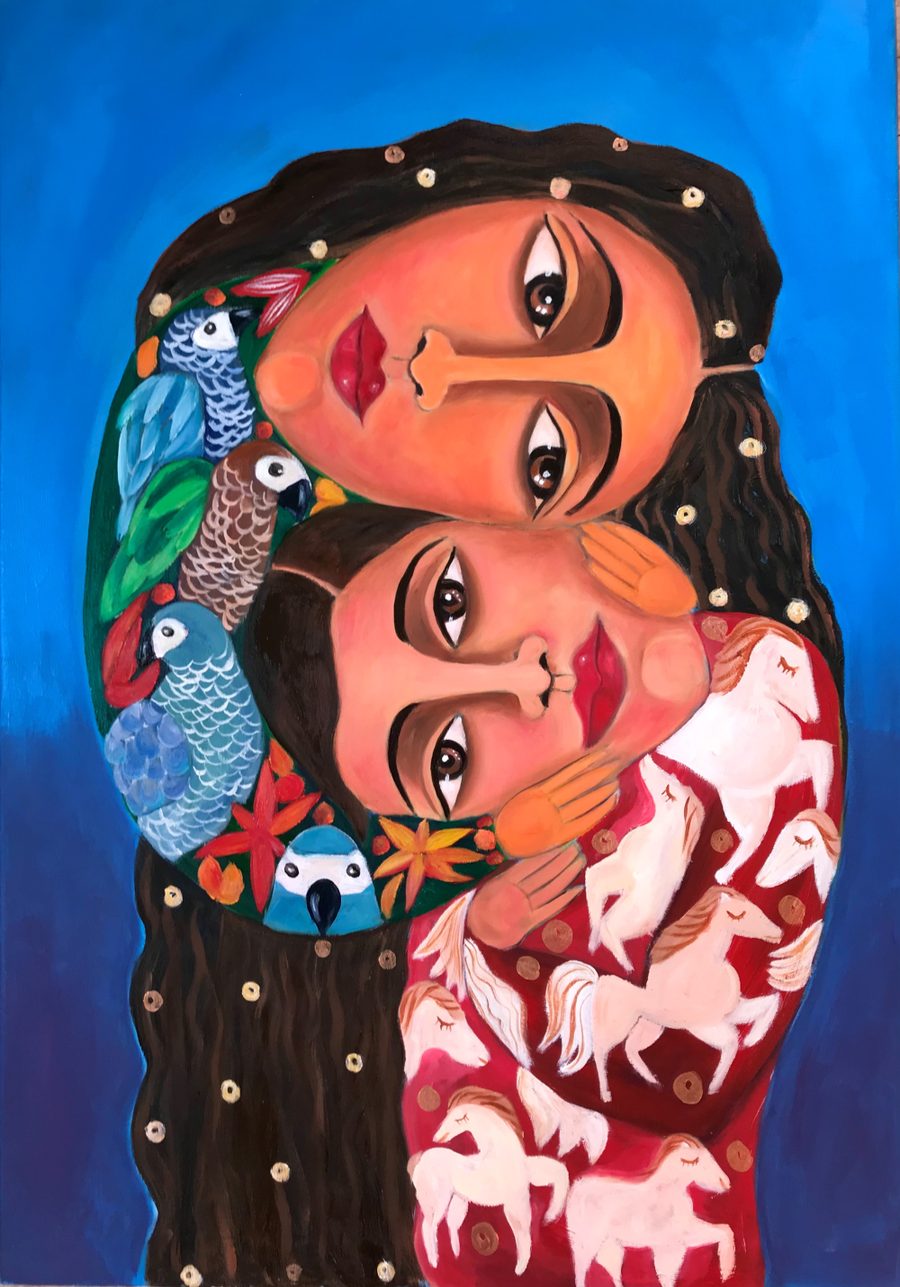
Malak Mattar grew up painting and drawing. It’s how she coped with PTSD and processed the atrocities she regularly witnessed near her home in Gaza.
In 2014, at age 14, Mattar began sharing images of her artwork online. Her fresh take on neo-romantic, post-impressionist portraiture soon gained international acclaim. Realistically grounded with fantastical elements, her work often foregrounds women in search of historicity, reflecting Mattar’s own biography through the power of image-making and symbols of transformation.
On June 30, Mattar’s solo exhibition of new and early paintings opened for a historic six-month run at the Garden Court Chambers in London, the institution’s first exhibition of a Palestinian artist. The work criticizes the legacy of injustices perpetrated by the United Kingdom in the wake of ongoing Israeli occupation.
Among the pieces is a new painting, “Greenbelt,” which portrays a young woman in a chair clutching a canvas depicting whirling dervishes. It conveys Mattar’s sorrow after being initially denied entry into the U.K. “I was rejected multiple times by the U.K. to enter as a visiting artist,” she explains. “This denial of me entering, and fellow artists from the same background as me, is something I highlight in my show — the limitation of movement of artists from Palestine.”
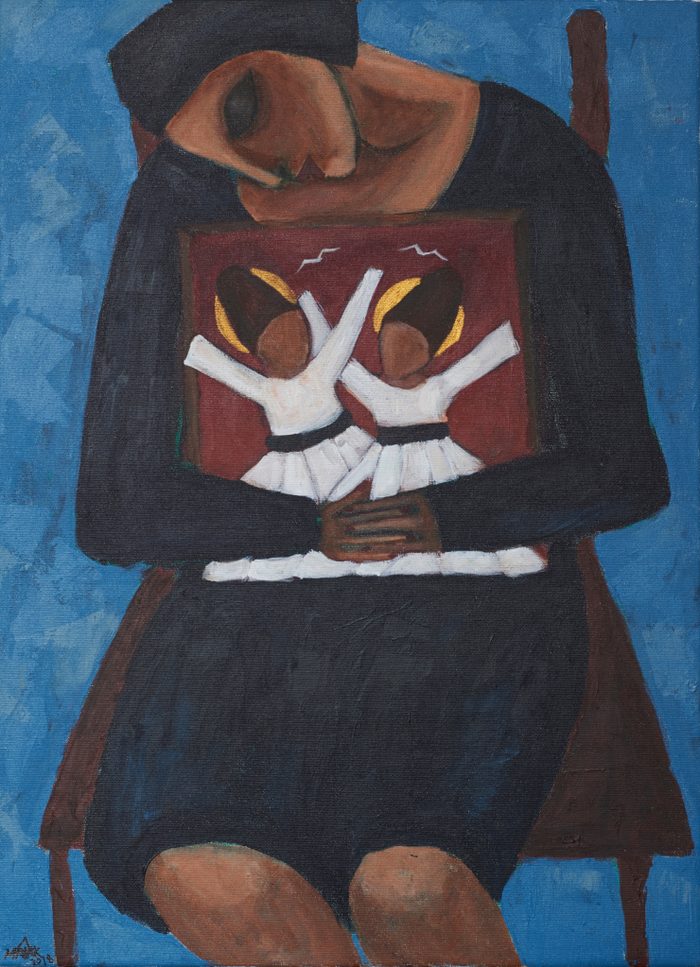
At school in Gaza, Mattar learned about the places she was unable to visit, how the borders of Palestine became narrower each year. She endured multiple attacks by the Israeli military into Gaza, one of the worst during the 2014 Gaza War, when one blast nearly claimed her life and took the lives of her neighbors before her eyes.
“The reason I started painting was because I was really scared of getting killed,” Mattar says. “As a way to escape these feelings, I started making sketches to let things go. I began to make art following the third attack that I survived when I actually saw people in front of me getting scattered into pieces. I painted out of necessity, to help myself.
“These themes — being Palestinian, Arab and a woman — are difficult, but rooted in my practice since I was 14. It’s my calling.”
“The Caged,” another painting in the London exhibition, symbolizes millions of Palestinians whose daily lives are tantamount to living in an open-air prison. The painting portrays a smartly dressed politician-type figure, face made of paper, standing above a briefcase on which a webbed globe floats where the figure’s heart might be.
“My art was always driven from this sense of complexity, of my own way of understanding,” Mattar says. “And I think about it in a collective way, like the siege that started 16 years ago, how two million people live in a cage. This is how I illustrated it in my early paintings.”
A small portrait, titled “Yusra al-Barbari,” expands on the theme. As the first woman from the Gaza Strip to graduate from a university, al-Barbari was a leader in Palestine’s anti-colonial protests against British and Zionist occupations. She suffered a travel ban in the 1970s for her political activities.
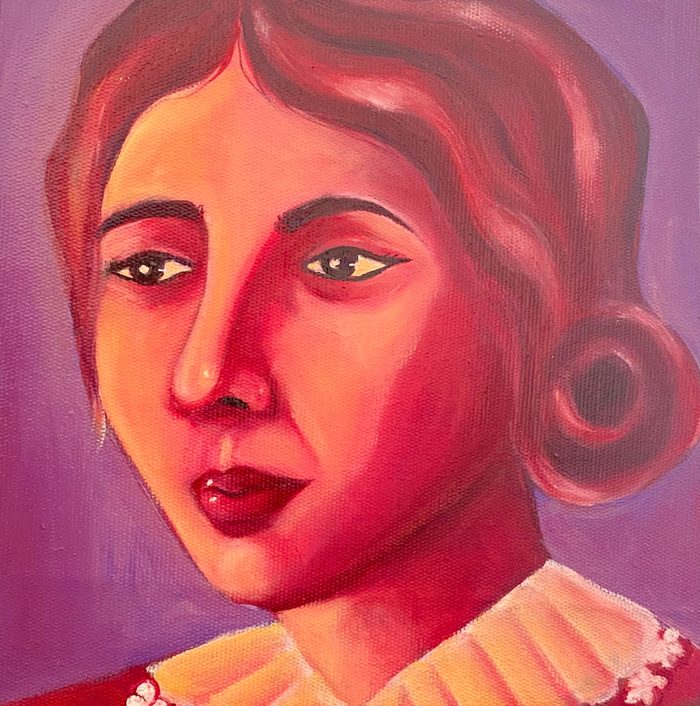
Mattar’s show represents three generations of stateless refugees born in Palestine, beginning with her grandparents, whose home village was demolished by Israeli soldiers following the Nakba in 1948. While the ongoing Israeli occupation of Palestine commits runaway atrocities against humanity — 2023 has been the deadliest year in the West Bank since at least 2005 — Mattar’s paintings are born of the stories of her people’s suffering. One painting portrays a young girl writing her will; another, the feeling of finally getting sleep after a ceasefire.
In “Mother Nature Embracing the Boy and His Horse,” interlocking figures are wreathed in colorful clothes with avian and equestrian patterns. The piece takes its origin from four boys who were killed while playing soccer on a beach in 2014, shelled by an Israeli naval gunship. Examining pictures taken at the scene, Mattar noticed the tired look of one boy as he fed a sleepy horse, unaware of his own imminent death.
This look at the plight of animals is new for Mattar, and the images are powerful. “I wouldn’t have paid enough attention to animals’ lives in Gaza if I hadn’t had a small silver fish I named Shafa, meaning ‘healing,’ in a small aquarium in my home,” Mattar explains. “Shafa helped me see relationships between humans and animals in a new way. During recent bombardments, I thought of all the animals being terrified, badly injured or killed as I saw buildings crashing to the ground. My small fish, Shafa, didn’t survive these bombings.”
Mattar had a chance to meet Angela Davis during her solo show in Portugal at the modern Museu das Artes de Sintra. Davis — a vocal supporter of the Palestinian right of return and the Boycott, Divestment and Sanctions movement — praised Mattar for her series addressing prison systems but took a closer look at a piece with a watermelon, emblematic of racism in an American context. Mattar explained to Davis how watermelons became a symbol of Palestinian resistance: Following the Six-Day War in 1967, Israel banned all public displays of Palestinian flags, which have a prominent red triangle along with green, black and white stripes — the same colors as watermelons. The artist Sliman Mansour began using watermelons in his work in 1980 as a peaceful workaround, after Mansour (along with artists Nabil Anani and Isam Bader) was arrested by Zionist forces that shuttered an art gallery in Ramallah. During interrogation, the artists had been reminded that creating political art or imagery that included the colors of the Palestinian flag would be confiscated by the Israeli Military Censor.
Mattar’s work in London continues to portray victims of Palestine’s colonial prison system, including freedom fighters like Fatima Bernawi, the first Palestinian woman prisoner to be arrested by Israeli security forces in the contemporary Palestinian revolutionary era.
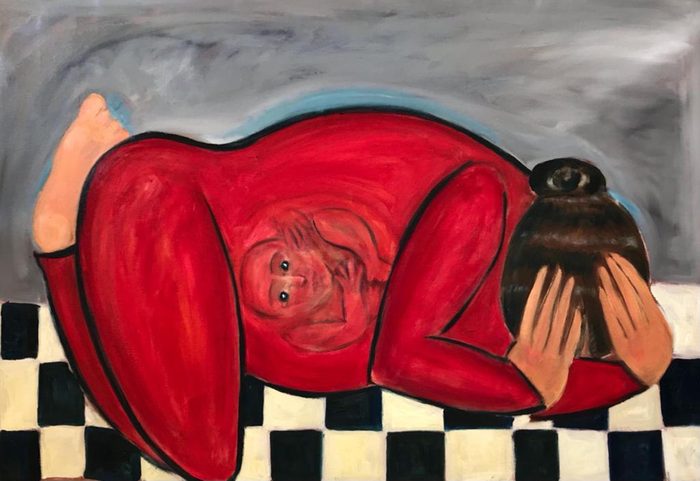
A cross between beauty and distortion is a frequent motif in Mattar’s work. “I will portray the beauty of where I grew up, despite the destruction and the erasure, wars and loss, my grandparents’ yard, the landscapes,” Mattar explains.
The show also includes a series of Palestinian landscapes and scenes from invasions into the Gaza Strip. “They are based on real imagery, the agony of lives lost in Gaza,” Mattar says, while emphasizing the universality of human suffering, a tie that binds the victims of colonization to their descendants, who share a similar narrative of oppression under the shadow of worldwide power mongering. “It is more noble to speak about struggle in a more universal way, because there are so many intersections in our struggle as humans, especially the colonized.”
Some, like Mattar and her fellow artists, continue searching for ways to transform the legacy of colonization into a story of resilience and solidarity, not merely within any single nation, but as a natural response to the global aftershocks of British colonialism. “Giving Birth in a Prison Cell,” for example, depicts a woman, dressed in red, her hands over her head as if protecting herself from an aerial bombing. She lies in a fetal position on a white and black linoleum floor. The cell wall behind her is gray. A child looks out through their mother’s transparent belly with bright and frightened eyes, wondering of the world that awaits.
Matt A. Hanson is a freelance journalist based in Istanbul, Turkey. He has written for Artforum, ArtAsiaPacific and the
International Center for Journalists, among many other outlets.
